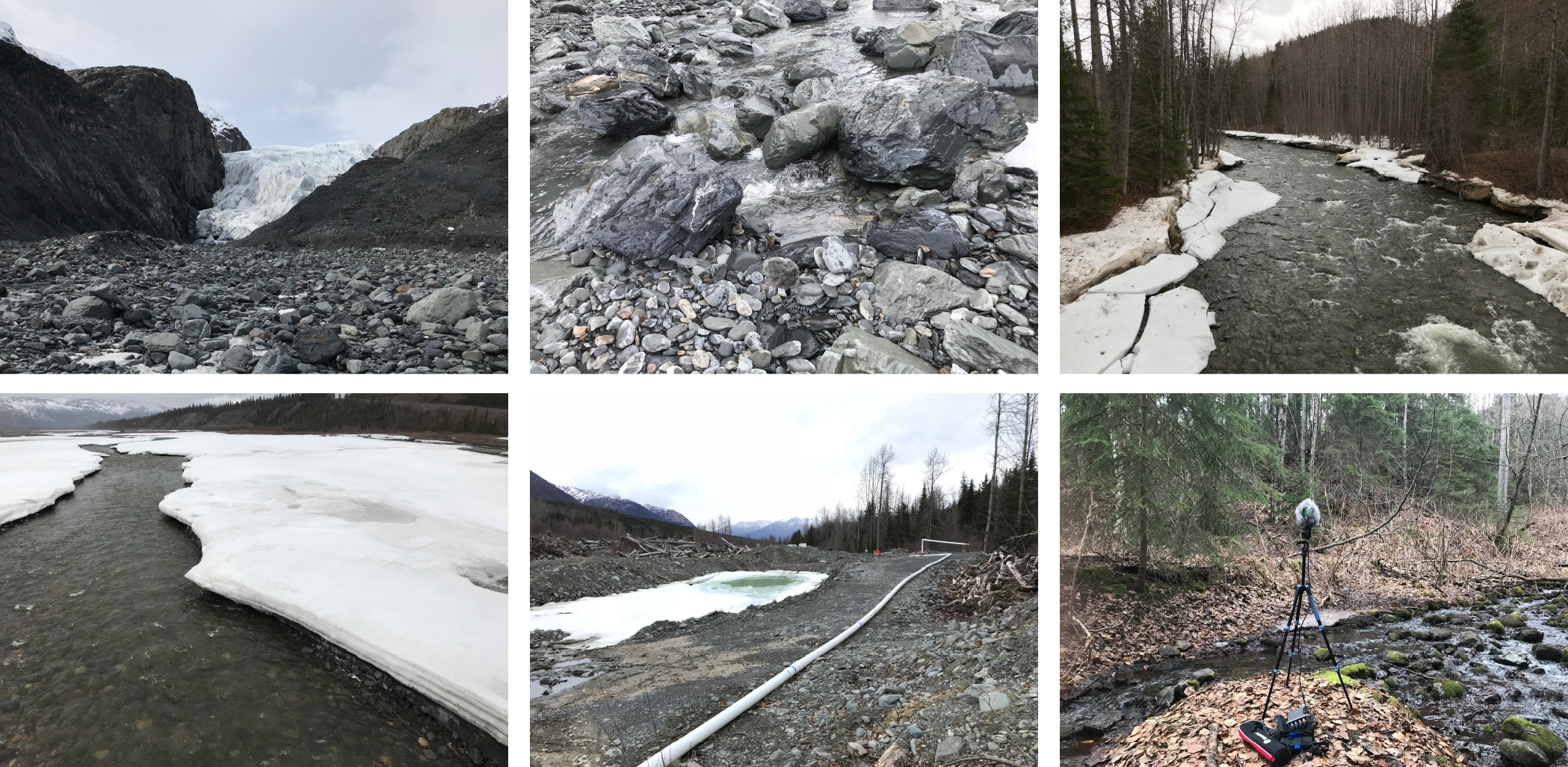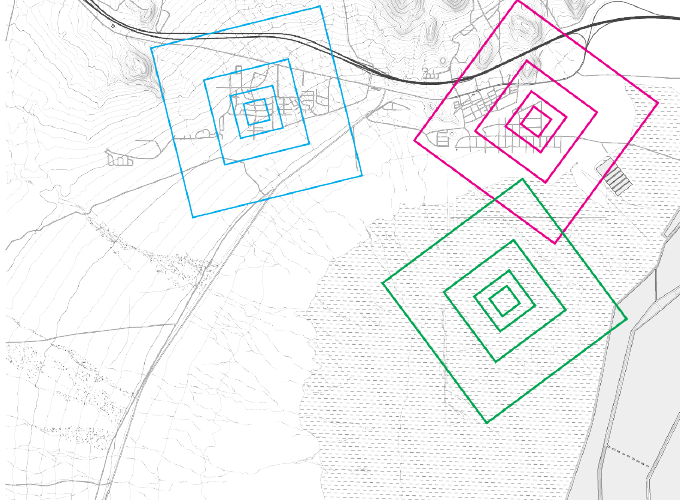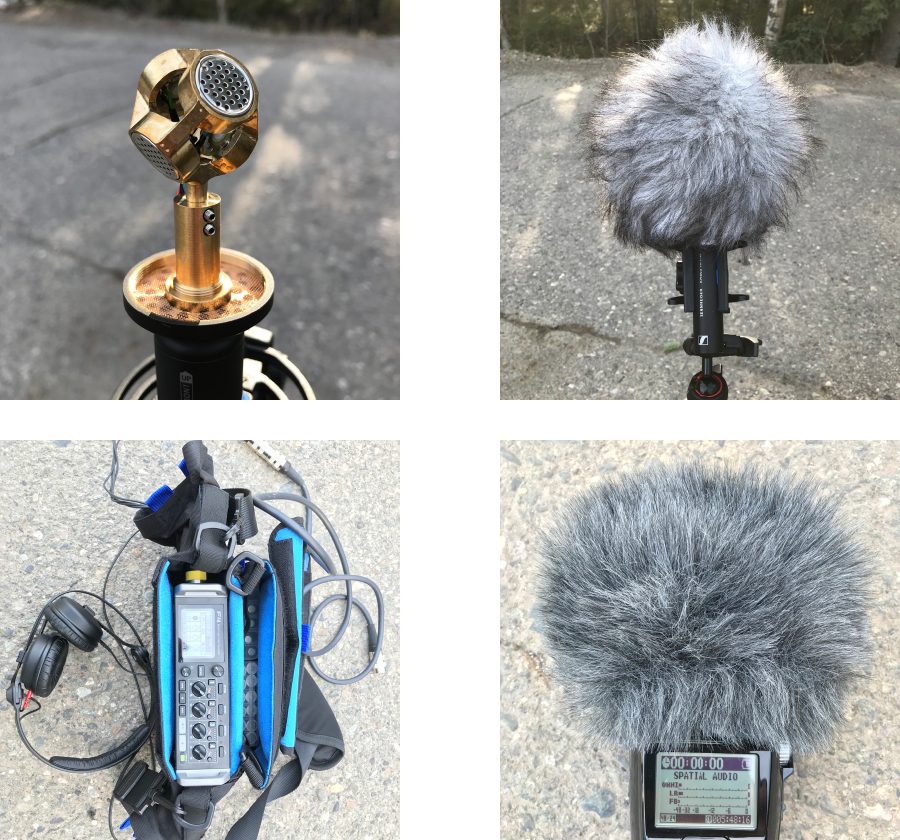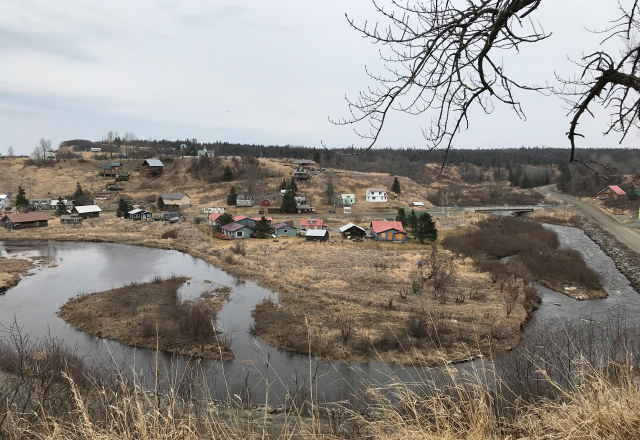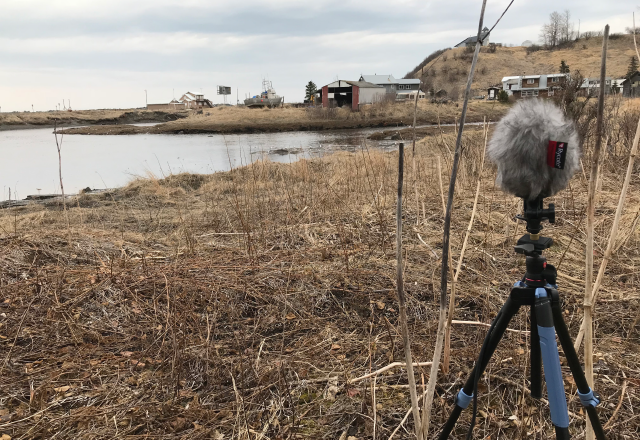Sifting (2018-21)
In 2018, I was awarded a Polar Lab Residency supported by the Anchorage Museum. My
project was titled Edges in the Alaskan Soundscape. Over the course of three weeks in April / May 2018, I
concentrated on spatial audio field recording in areas of the Kenai Peninsula and Denali National Park. During this
timeframe, alongside field work, I met with National Park Service scientists to learn
about acoustic monitoring and soundscape ecology from their perspective as researchers. The aim of my project was
to conduct ambisonic field recording in areas with low human population density in order to observe and document
“edges” while creating source material for new compositions and sound installations. Sifting is an outcome of this work. It debuted as a 4-channel sound installation for the Listen Up exhibition at the Anchorage Museum (April - October 2021). It was composed in third order ambisonics and may be presented on larger speaker arrays. A stereo mix is provided on this page.
In my field work, edges recurred thematically as:
![︎︎︎ Recording site: Resurrection Bay]()
Through the residency, I was able to:
In my field work, edges recurred thematically as:
- A spatial relationship, areas between the built environment and natural land
- A seasonal timeframe, the period between winter (ice break-up) and spring
- A practical situation, what was manageable for solo expeditions in difficult weather and terrain
- Ecotone, a region of transition between biological communities
- Geographical identity, the Alaskan areas of Kenai and Denali as at the edge of the Arctic
- Portend of climate change and with it a transforming phenology (alteration of life cycle events)

Through the residency, I was able to:
- Explore spatial audio field recording techniques by focusing on the use of ambisonic microphones.
- Develop and test strategies for distributed spatial audio
recording using several GPS-tracked, time-synchronized recorders.
- Create an extensive library of sound recordings for use in new compositions, performances, and installations for multichannel sound systems and high-density loudspeaker arrays; the total amount of audio captured on this trip was approximately 120 hours.
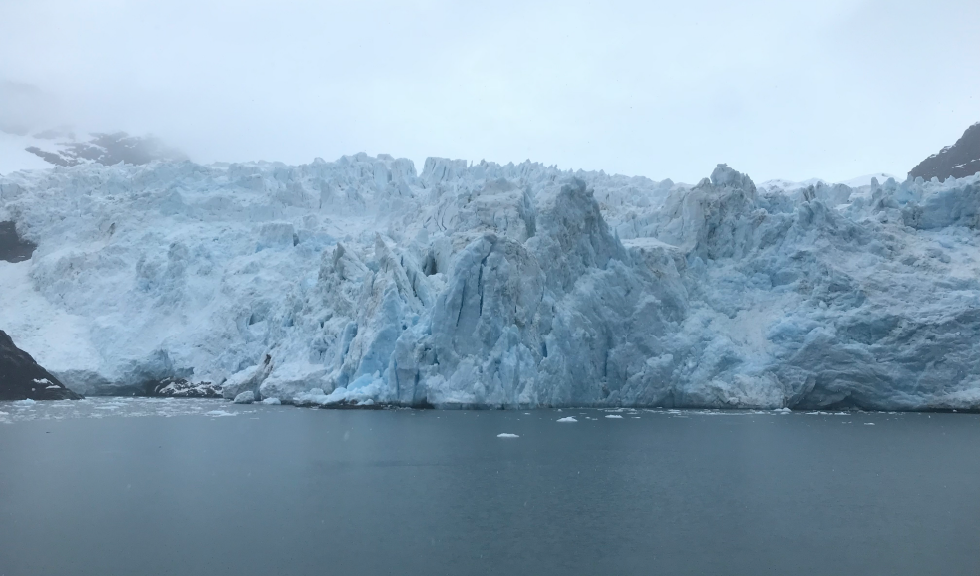
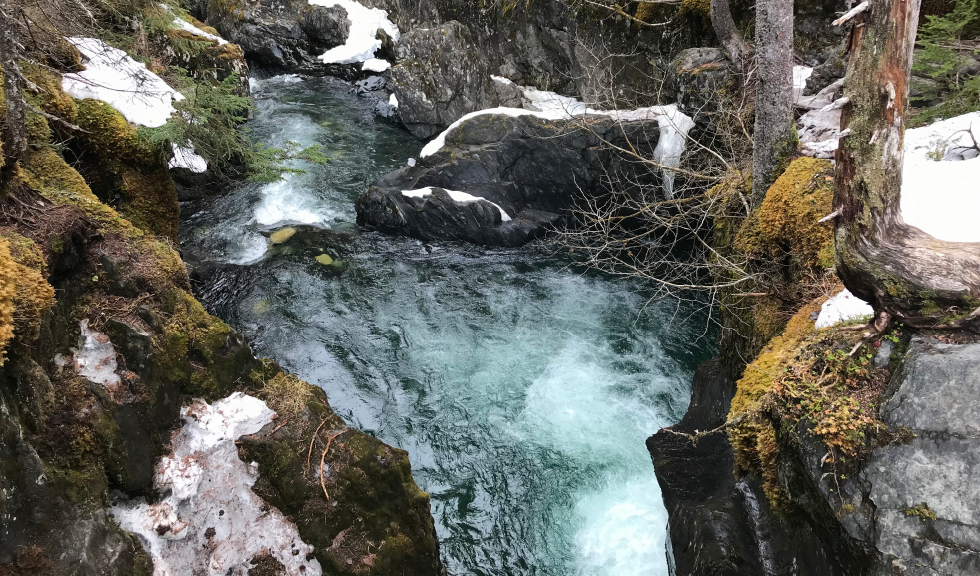
Kenai and Denali proved to be excellent sites because:
- As places new to me, they required a high level of attention.
- I could experience an expanded acoustic horizon; without competition
from human-caused noise, one can hear further, and recordings have
a related expansive quality.
- It is easy to find quietness; different figure / ground relationships
become noticeable, and new minimum technical requirements for
equipment are evident.
- There is a great diversity in the built environment, land-use, and
natural land areas accessible from Alaskan highways.
- There is extended daylight, which provides more time for exploration / experimentation.

